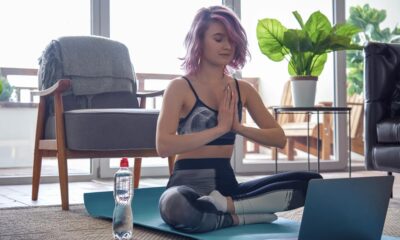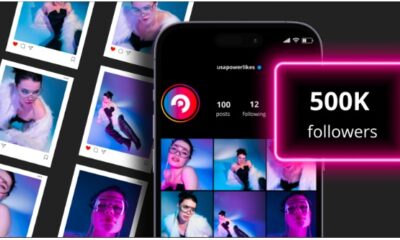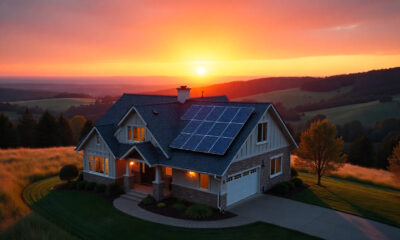LIFESTYLE
Night Portraits: Shooting London’s Evening Elegance — Tips for Lighting, Location, and Styling After Dark

London looks different after dark. It’s not just “darker.” Some bits feel sharper. Others go all soft. At night in London, light does strange things. If you’re carrying a camera, you can’t just hope for the best — you’ve got to think about what’s happening with the light. You’ve got to figure out where to plant yourself, what to follow, what to dodge — otherwise you end up with a flat, grainy mess.
Find the good light before you need it
The number one thing that kills a night portrait is bad lighting. And there’s plenty of it around — dull orange street lamps that make skin look sickly, LEDs that blow out faces, shop signs that cast weird shadows across half a jawline. Walk the area before you start shooting and notice where the light works for you.
Look for shopfronts with big, soft glows, old-fashioned lamps that give a warm wash, or those big, round bulbs outside hotels that seem to light people perfectly without trying. Even passing bus headlights can be great — but you need to be ready to grab that shot in the two seconds you’ve got.
Work with contrast, not against it
Night is all about contrast. There’s no getting away from deep shadows, so use them instead of fighting them. Position your subject so one side of their face falls into shadow — it gives a sense of depth and drama that you just don’t get in daylight.
If you’ve got a strong background light source — say, a restaurant window glowing gold — place your subject a few steps in front so the light spills onto them just enough. You don’t need to overexpose to see everything. Let parts of the image fall away into darkness; it makes the light you do have feel more special.
Think of location like a director
London’s got an endless supply of night backdrops, but not all of them tell the same story. Mayfair’s all clean lines and polish. Soho’s a jumble of neon and people shouting over music. South Bank’s slower, softer — catches a bit of romance if you hit it at the right time. Figure out your mood before you start roaming. If you want elegant, skip the messy backdrops. A simple lit archway, a glossy black door, or a quiet cobblestone street with one hanging lamp can say more than ten signs and a crowd behind you.
Also, don’t forget the ground. Wet pavements are free reflectors, bouncing light back up into your shot. If it hasn’t rained, you can always fake it with a water bottle.
Styling makes or breaks it
At night, you’re short on natural light, so clothes suddenly matter a lot more. Dark stuff — black, navy, deep red — just melts into the shadows. Good if you want the face to be the star, dull if you like the outfit. Pale shades, white, cream, shiny metallics — they grab whatever light’s around and throw it back at you.
If you’re styling the shoot, bring something with texture; the London club dress code is good to keep in mind in that case — it’s curated to work with the city. Sequins. Satin. Velvet. Anything that plays with the light instead of hiding from it. Even the small stuff works harder at night — a flash of gold from an earring, a watch face catching a street lamp. Just enough to make someone look twice without blinding them.
Keep your subject still — and yourself steady
At night, your shutter slows down unless you’re blasting light everywhere. Which is fine — just remember, even the tiniest twitch can blur the whole shot. Tell your subject to hold their pose for an extra beat after the shot — people naturally drop it as soon as they hear the shutter.
If you don’t have a tripod, lean against a wall, a lamppost, or even plant your elbows into your ribs to keep steady. Some photographers will even brace their camera against a street sign or bin — not glamorous, but it works.
Bring your light — but don’t overdo it
You don’t need to bring gear, but a small handheld LED or even the torch from another phone can save you when the street lighting isn’t enough. The trick is to use it gently. A hard white light directly in someone’s face at night will look… well, harsh. If you’re using extra light, try hitting from the side or bouncing it off a wall so it’s not harsh. In a busy spot, you might be better off letting whatever light’s already there do the job. Blast too much on your subject and suddenly, they look like a cardboard cut-out dropped into the street.
Shoot more than you think you need
Night photography can be unpredictable. Light changes fast — a bus passes, a sign turns off, a cloud moves. Take more shots than you think you’ll use, and check them often. You might think you’ve nailed one, then zoom in and see it’s slightly blurry or the light’s hitting strangely.
The best night portraits of London don’t just show the person — they show the feeling of the city around them. Yeah, get your exposure and shadows right, but don’t kill the mood. Let the atmosphere sneak in — steam curling out of a drain, a puddle catching a glint, the corner of a shop turning gold for three seconds before it fades. That’s the stuff that makes the shot breathe.

-

 EDUCATION3 months ago
EDUCATION3 months agoFree Cover Letter Generator: Build Job-Winning Letters in Minutes
-

 GUIDE3 months ago
GUIDE3 months agoBenefits of Online Personal Training for Fitness Success
-

 BUSINESS2 months ago
BUSINESS2 months agoGrow Your Audience with USA Instagram Followers
-

 TECH2 months ago
TECH2 months agoFreedom Forever Solar Reviews Explain How Conversational Intelligence Turns Customer Interactions into Insights